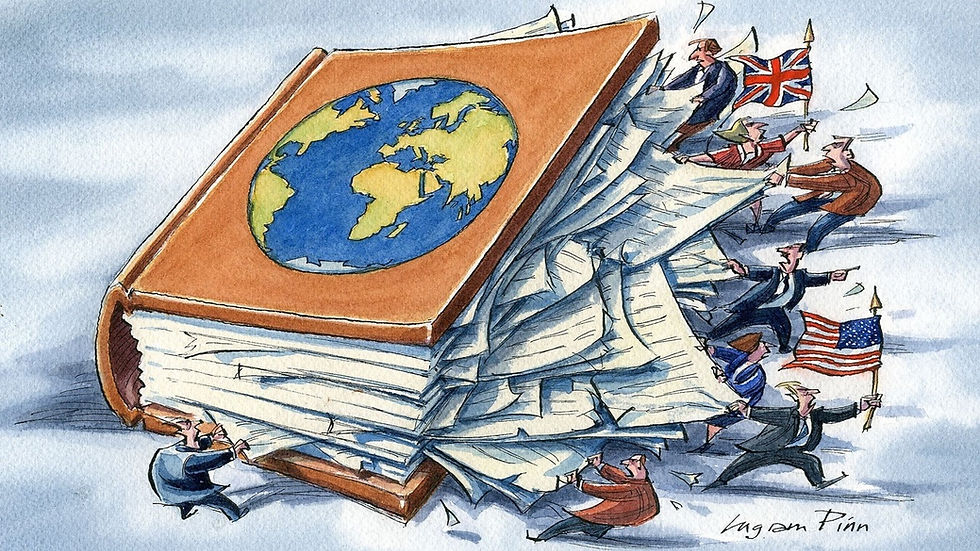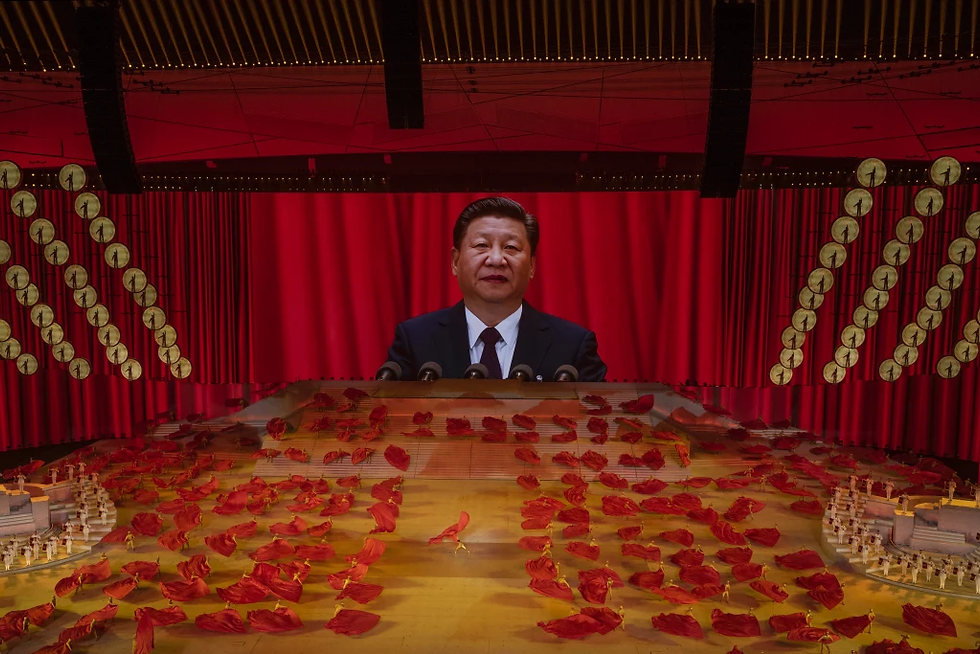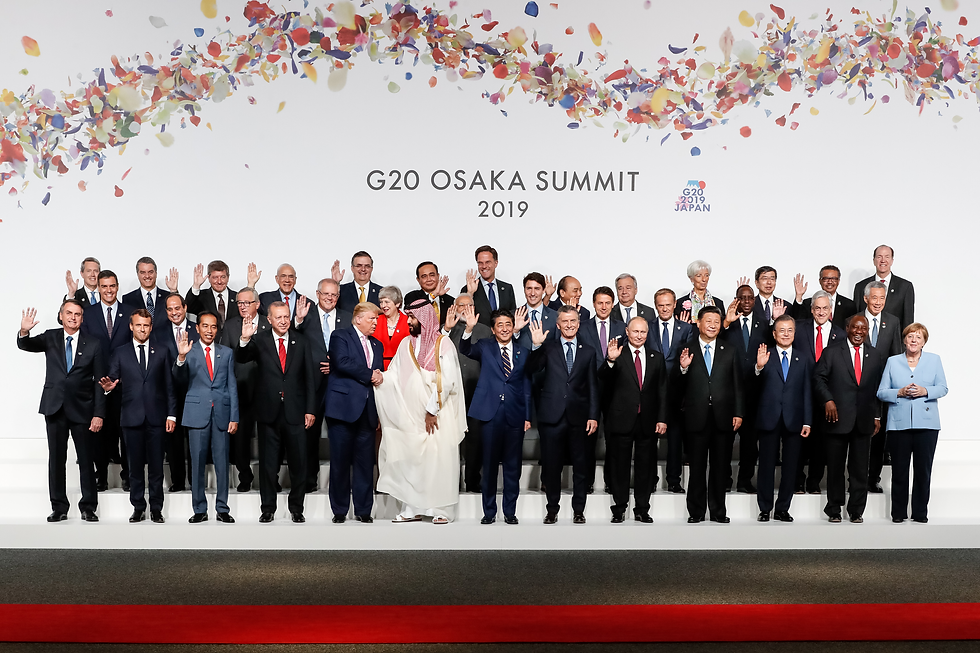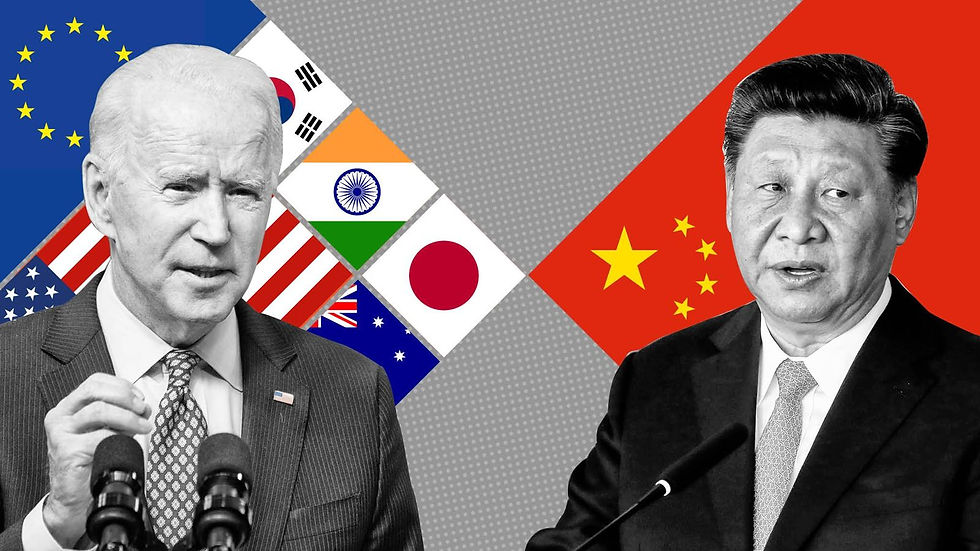International Organizations Series: Internal Governance
Foreword
With growing interdependence and globalization, the international arena started to evolve and international organizations (IOs) became significant actors in world politics. In this sense, understanding the functioning of International Organizations reveals the privileges and limits they create while providing insight into a part of contemporary world politics. This series is dedicated to discussing the evolution and basics of intergovernmental organizations.
International Organizations Series is divided into 6 sections:
International Organizations Series: Introduction and Early Examples
International Organizations Series: Managing Public and Private Partnerships
International Organizations Series: Internal Governance
International Organizations Series: Internal Governance
IOs have fundamentally different governance pillars than conventional organizations. Typically, they consist of sovereign members bound by a treaty, a secretariat as a coordinating entity, and an executive board to provide guidance and supervision. This tripartite governance relationship frequently referred to as the ‘operational structure’ in the institutional and organizational design literature, forms the foundation on which most IOs are governed (Cannon & Biersteker, 2020, p. 204). This article examines the tripartite governance relationship of IOs in the light of principles of good governance.

There is nothing that defines an organization as much as its membership, whether an organization is open or closed, or may be classified as universal, regional or of limited membership, defines its vision and outlook, as well as the scope of the organization’s activities (Droesse, 2021, p. 64). The prerequisites for membership are usually defined in the founding treaty. States can only unilaterally declare their will to join an international organization, meaning that any state does not have the right to become a member of an IO due to its universal character. IOs controlling the procedures of admission through specific requirements creates a conflict with the idea of universal membership. With more members, an IO's scope of authority tends to be more varied and comprehensive, yet, the chances of an impasse increase as well. If the IO pursues universal membership, it may find reaching agreement on controversial or politically polarising issues more difficult since institutional flexibility tends to decrease with increasing number of members (Cannon & Biersteker, 2020, p. 205). If explicit criteria are articulated for membership, such as in the World Trade Organization (WTO) or the European Union (EU), there is a guarantee (at least at the outset) that members will share certain beliefs, institutional forms, or procedures that may facilitate their reaching agreement (Cannon & Biersteker, 2020, p. 205). Regionalization within universal IOs is also possible, which might be related to specific provisions of the founding treaty. Currently, there are five regional commissions of the UN including the World Health Organization stating “Health Assembly shall from time to time define the geographical areas in which it is desirable to establish a regional organization” and “may, with the consent of a majority of the Members of each area so defined, establish a regional organization to meet the special needs of such area.” (Droesse, 2021, p. 67).

In the internal structure of IO, secretariats takes center stage under the notion of bureaucratic autonomy. The degree of autonomy member states grant to an IO’s secretariat illustrates the shifting balance of power between the legislative and executive branches of IOs (Koppell, 2010, p. 118 as cited in Cannon & Biersteker, 2020, p. 207). By focusing on intra-organizational structures and conceiving of relationships between the secretariat and its member state principals primarily from the perspective of the former, the ability of international secretariats to develop autonomous bureaucratic preferences and their capacity to transform these preferences into action can be analyzed (Bauer & Ege, 2016, p. 1019-1020). Since most secretariats are limited in their capacity to engage in new initiatives, they wait for approval from their members-dominated governing bodies. However, the degree of autonomy given to secretariats may also rise over time as they develop their vast reservoirs of knowledge across a variety of issue domains to put up fresh ideas and IO improvements. In addition to member states, there are IOs created in collaboration with other IOs as well. When IOs participate in the creation of other IOs, they design the new organizations with features that give their secretariats greater autonomy, however, when member states become concerned about the increasing autonomy of secretariats, they have a number of institutional vehicles for reasserting their control, ranging from budgetary constraints and changes of leadership to the commissioning of periodic reviews of the organization (Johnson, 2014 as cited in Cannon & Biersteker, 2020, p. 207). Member states have the option to lower the amount of their financial contribution or provide more funds to support particular goals. In addition, some member states might use assessments of the IO's performance to oust the leadership.

The highest governing body in an IO is typically an assembly or board of governors in which each member state has a seat. There is typically an executive board under this plenary body; this can either be a plenary body or one with a membership that is restricted. Below the executive board is the chief executive officer (CEO) of the institution, which is usually appointed by the executive board, is in charge of the day-to-day management of the organization, subject to the board’s oversight (Martinez-Diaz & Lamdany, 2009, p. 85). The CEO is in control of the personnel and accountable for their work. IGO boards are expected to play an important role in monitoring the activities of IOs in order to align the secretariat’s decisions and operations with member states’ demands and actively initiate, design, and evaluate IO strategies, whereas the boards of MNEs and NGOs are usually only consulted when the chief executive officer (CEO) designs the organization’s strategy (Cannon & Biersteker, 2020, p. 208). In each IO, executive boards play a key role in upholding the following principles of good governance: accountability, participation, effectiveness and efficiency. The optimal level of board involvement in the strategy formulation of IOs depends on an organization’s level of complexity (Federo & Saz Carranza, 2018a as cited in Cannon & Biersteker, 2020, p. 209).

According to this reasoning, board involvement can have a favorable impact on complex IOs, while the less complex benefit from reduced involvement. For instance, three development banks—the Asian Development Bank, the Inter-American Development Bank, and the World Bank—representing highly complex organizations with enhanced information-processing needs, demonstrated active board involvement, with the presence of full-time directors, high frequency of board meetings, participation on many board committees, and involvement in CEO selection (Federo & Saz Carranza, 2018a as cited in Cannon & Biersteker, 2020, p. 209). By contrast, the UN Environment Programme, the United Nations Children’s Fund (UNICEF), and the International Fund for Agricultural Development with relatively narrow mandates, recorded lower frequency of board meetings, the absence of an executive committee, and the absence of involvement in CEO selection (Federo & Saz Carranza, 2018a as cited in Cannon & Biersteker, 2020, p. 209).
Following the association of a number of IOs with corruption, mismanagement, and controversial, failed programmes in the late 1990s and early 2000s, the debates about the ‘democratic deficit’ and lack of accountability of IOs escalated (Cannon & Biersteker, 2020, p. 210). When calls for democracy and better government became louder and expectations were heightened as to what international organizations might do to further this aim, many multilateral agencies -from the UN to multilateral development banks- took up the summons and good governance moved onto the agenda of many IOs (Woods, 1999, p. 39). In order to retake control of IO bureaucracies, member states established a variety of oversight mechanisms, including expanded public access to information and agencies for investigation. For instance, starting in 2000 the IMF and UN have ethics offices and organizations such as the UNDP and the World Bank implemented whistleblower policies (Grigorescu, 2013, p. 176).

In addition to these, design features of IOs incorporated into principles of good governance. Growing functional demands for involvement of transnational actors in international cooperation, strengthened the voice of democratic states within IOs, and loosened the constraint of national sovereignty (Tallberg et al., 2013, p. 743). IOs started to engage non-state actors by requiring usage of their resources and expertise, while providing them with more access to policymaking. As a new standard, transparency and inclusive governance practices proliferated and solidified inside the UN system. When the Constitutional Treaty was rejected in the French and Dutch referenda, the EU has promoted several participatory plans such as EuroPolis, Ideal-EU, and Your Voice in Europe, which go beyond the consultation of NGOs and aim at increasing citizens’ information and involvement in Europe (Cogan et al., 2016, p. 1140). What these experiments of public participation share is the idea of exploring in a highly qualitative way the priorities and preferences of European citizens, (re-)connecting them with the rather elite-driven political sphere in Brussels, and, more ambitiously, including lay citizens in the EU decision-making process (Cogan et al., 2016, p. 1141). These results were positive in terms of the three principles: legitimacy, participaticion and transparency. However, the principle of accountability continues to raise concerns because of legal immunities of IOs and their violation of international norms. Many legal scholars argue for heightened legal scrutiny and abrogation of certain IO immunities since the internal oversight mechanisms lack sufficient means to hold IOs accountable structural reasons inhibit international courts and tribunals from conducting adequate review (Cannon & Biersteker, 2020, p. 212).

Despite the improvements, there is a general opinion that present IOs are either failing or lacking in certain crucial areas. Many IOs have their roots back decades. Their ability to adapt to changing demographic and global power distributions is key to the maintenance of their legitimacy, yet beyond reforms to specific design features, core institutional reforms of the operational structure of major post-World War II IOs have proven difficult (Cannon & Biersteker, 2020, p. 221). The international financial institutions created at Bretton Woods are demonstrating difficulties in reform and adjustment, and unilateral application of tariffs without recourse to the WTO by the US, giving rise to recent concerns about the future of the WTO itself (Cannon & Biersteker, 2020, p. 223). In addition, the occurrence of private organizations with stronger finances, started to emphasize institutional deficiencies of IOs even more. As the present institutional order does not provide a suitable platform, states are resorting to alternative ways of cooperation to address shared problems. Governance-related problems create tension with the ontology of IOs by underlining the changing circumstances. Nevertheless, these challenges only indicate the need for reform in the traditional governance of IOs. By virtue of some of their broad governance or institutional characteristics (inclusivity, representativeness, and the extensiveness and depth of their expertise), IOs remain first among equals in many issue domains (Cannon & Biersteker, 2020, p. 223).
Bibliographical References
Bauer, M. W., & Ege, J. (2016). Bureaucratic Autonomy of International Organizations’ Secretariats. Journal of European Public Policy, 23(7), 1019–1037. https://doi.org/10.1080/13501763.2016.1162833
Cannon, C., & Biersteker, T. (2020). The governance of international organisations. Advances in Corporate Governance, 203–229. https://doi.org/10.1093/oso/9780198866367.003.0009
Cogan, J. K., Hurd, I., & Johnstone, I. (2016). The Oxford Handbook of International Organizations. Oxford University Press. https://www.oxfordhandbooks.com/view/10.1093/law/9780199672202.001.0001/law-9780199672202-miscMatter-3
Droesse, G. (2021). Membership in international organizations: Paradigms of membership structures, legal implications of membership and the concept of International Organization. T.M.C Asser Press. https://link.springer.com/book/10.1007/978-94-6265-327-6
Grigorescu, A. (2013). International Organizations and their bureaucratic oversight mechanisms: The democratic deficit, accountability, and transparency. Routledge Handbook of International Organization, 202–214. https://doi.org/10.4324/9780203405345-24
Martinez-Diaz, L., & Lamdany, R. (2009). Studies of Imf governance: A compendium. International Monetary Fund. https://www.elibrary.imf.org/view/book/9781589068636/9781589068636.xml
Tallberg, J., Sommerer, T., Squatrito, T., & Jönsson, C. (2013). Explaining the transnational design of International Organizations. SSRN Electronic Journal. https://doi.org/10.2139/ssrn.2106660
Woods, N. (1999). Good governance in international organizations. Global Governance: A Review of Multilateralism and International Organizations, 5(1), 39–61. https://doi.org/10.1163/19426720-005-01-90000003
Visual Sources
Figure 1: Mazaar, M.J. (2018). La verdadera historia del orden liberal. [Illustration]. Lampadia. https://www.lampadia.com/assets/uploads_images/images/b2%2815%29.jpg
Figure 2: Singleton, C. May, D. Adesnik, D. (2021). A Better Blueprint for International Organizations. [Image]. FDD. https://www.fdd.org/wp-content/uploads/2021/06/fdd-monograph-a-better-blueprint-for-international-organizations-advancing-american-interests-on-the-global-stage.pdf
Figure 3: Bagshaw, E. Knott, M. (2021). China’s rise is fast and they will be the dominant power in the region within the decade. [Image]. SMH. https://www.smh.com.au/world/asia/us-v-china-the-final-verdict-20210701-p5860h.html
Figure 4: Santos, A. (2019). Family photo of the 2019 G20 Osaka summit. [Photograph]. Wikipedia. https://commons.wikimedia.org/wiki/File:Family_photo_of_the_2019_G20_Osaka_summit.jpg
Figure 5: Anonymous. (2021). US -China trade war will harm the world. [Hybrid Art]. Financial Times. https://israelnoticias.com/wp-content/uploads/2021/06/Biden-y-Xi.jpg
Figure 6: Anonymous. (2017). United Nations. [Image]. Demus. https://www.demus.org.pe/hnoticias/onu-comunidad-internacional-interpela-al-estado-peruano-por-caso-esterilizaciones-forzadas/




https://www.epsxf.com ; https://www.yyeps.com; https://epsxf.com; https://yyeps.com; https://eps-machine.net; https://epp-machine.com; https://eptu-machine.com; https://eps-machine.top; https://epp-eptu-machine.com; https://sw-eps.com; EPS Machine EPS Cutting Machine; EPP MachineEps Raw Material; EPS MachineEPS Mould; EPP MachineEPS Recycling System; EPS MachineEPS Block Molding Machine; EPP MachineEPS Shape Moulding Machine; EPP MachineAging Silo for EPS Machine; EPS Machine; ETPU MachineEPS and EPP Heating Room; ETPU Machine; ETPU MachineAging Silo for EPS Machine; EPP Machine; EPP Machine EPP Shape Moulding Machine; EPS MachineEPS and EPP Heating Room